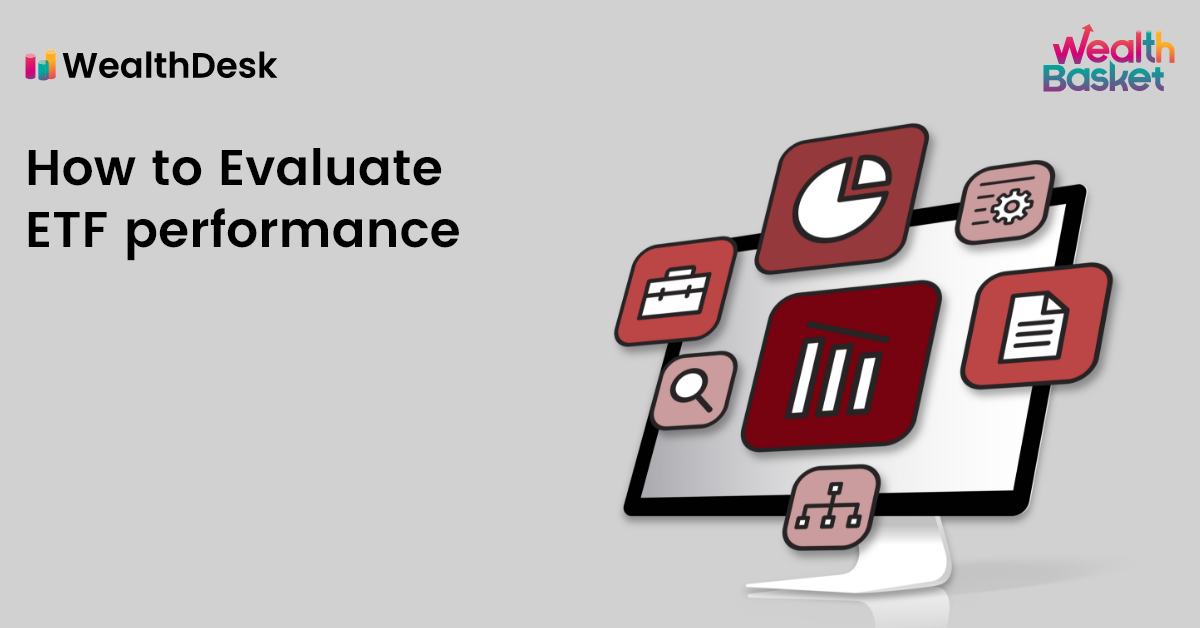The Exchange Traded Funds (ETFs) invest in a security, market, commodity, or index to duplicate its performance by creating a portfolio of similar securities included in the index itself. But, how you will evaluate the performance of such ETFs? Is it actually copying the index performance?
The ETF tracking errors are crucial for an ETF’s performance evaluation and other factors such as ETF liquidity risks, expense ratio, net asset value, etc.
This blog will explain what are ETF tracking errors, the causes of tracking errors in an ETF, and factors affecting the ETF performance evaluation.
What is ETF Tracking Error?
Tracking error is a difference between the actual performance of the ETF and the performance of the index it is tracking. Even if an ETF exactly replicates an index by investing in the same securities with the same proportion of securities in the benchmark index, you will still find tracking errors in its performance.
3 Causes of Tracking Error in ETFs
Tracking errors occur due to various reasons – sometimes it is the expense ratio or the other time it could be regulatory (SEBI) restrictions. Let’s see which are the primary causes of the tracking errors in ETFs:
- One of the most prominent reasons could be the levy of the internal expenses and costs connected with the creation/redemption process.
- Index optimization strategy is another reason why tracking errors exist. Certain ETF managers use an optimization strategy for the assets in the ETF portfolio rather than just duplicating the benchmark performance.
- Finally, deviations might occur if a fund ceases to issue new shares. When this happens, the price of an ETF might climb above its genuine value, causing it to trade at a premium.
Factors Affecting the ETF Performance Evaluation
To track ETF performance, we must first understand the factors that affect ETF Performance Evaluation. Let’s see which are these factors:
Expense Ratio
The fund that manages the ETF and replicates the benchmark performance charges specific fees from the investor, which is called an expense ratio. The expense ratio will tell you how efficiently the fund manages your ETFs.
Hence, the funds with a lower expense ratio and who manage to replicate the benchmark performance very closely are pretty efficient in managing your ETFs.
Tracking Errors
The more the ETF tracking errors, the poorer the performance of your ETF could be. More tracking errors indicate the inefficiency of the fund to duplicate the benchmark performance. It is also true that not all funds that charge fewer fees will outperform the benchmark index.
Capital Gain Tax
The tax rate of the ETFs in India is higher than the other countries. Hence, tax efficiency could also be one of the performance evaluation indicators to tell you how your ETF is performing.
ETF Liquidity Risks
The liquidity of the ETF is closely connected to the tracking errors. The research suggests that less liquid ETFs tend to generate more tracking errors. This means the more liquid your ETF is, the lesser tracking errors it may generate.
How to Calculate the Tracking Errors in ETF?
The metric that measures the volatility of the excess returns compared to a benchmark index is called tracking error.
Estimate the tracking Error by using a sequence of returns for an investment or portfolio against its benchmark:
The formula for calculating tracking errors is as follows:
| Tracking Error = Standard Deviation of (P–B) |
P denotes the ETF’s return.
B stands for the return from the benchmark index.
For better comprehension, let us consider an example. The table below illustrates the S&P 500 returns, index fund returns, and tracking difference over five years:
| Index ETF | S&P 500 | Sequence of differences |
| 11% | 12% | (11-12) = -1% |
| 3% | 5% | (3-5) = -2% |
| 12% | 13% | (12-13) =-1% |
| 14% | 9% | (14-9) = 5% |
| 7% | 8% | (7-8)= 1% |
The Tracking Error, or standard deviation, of this series of differences is 2.79%.
Tracking Error is better understood assuming the probability of the return difference is regularly distributed.
Conclusion
While the tracking errors tell you how closely your fund is tracking the benchmark index, you can reduce it by adopting definitive steps such as stock lending, using index futures, and temporarily shifting to fixed income securities.
Nevertheless, it could be the best practice if you evaluate the performance of your ETFs frequently to avoid tracking errors and get desired returns from your passive investment instrument.
How Can We Help?
At WealthDesk, we can offer you a readymade WealthBasket consisting of stocks or ETFs reflecting an investment strategy or theme designed explicitly by the SEBI-approved investment professionals and make your investment journey hassle-free.
FAQs
Yes, Indians can buy RPAR Risk Parity ETF Shares
because RBI permits Indians to invest
up to $2,50,000
a year in foreign markets.
You must check the tracking errors your ETF is
generating. Understand your benchmark index to
evaluate the risk exposure that will help you
understand whether you have a good ETF or not.
Remember,
fewer tracking errors mean your ETF is performing
well against the benchmark index.
The factors like its underlying index, ETF liquidity, the difference between the price and NAV, expense ratios, etc., should be evaluated before choosing an ETF.


















